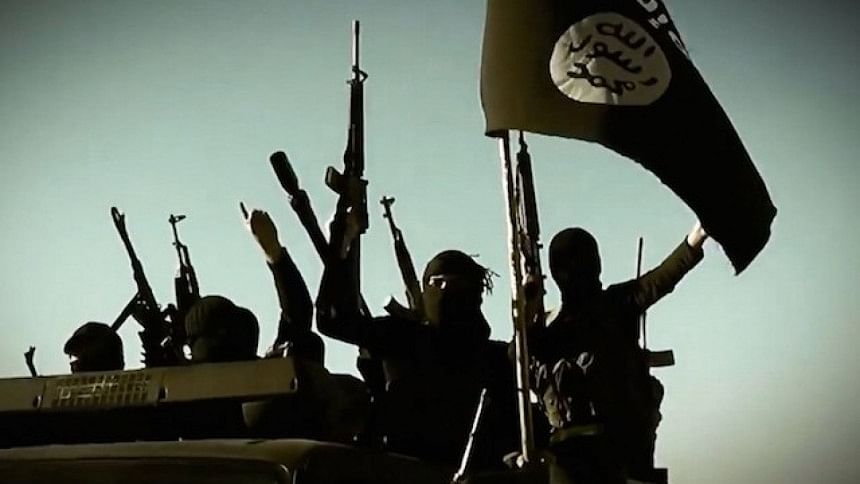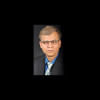Islamic extremism: The elephant in the room

The Kingdom of Saudi Arabia's so-called 'Arab-Islamic-American' summit in which US President Donald Trump addressed heads of governments and states of 55 countries was a high stake event through which Saudi royals wanted to show their strength and leadership in the Arab and Muslim world. They also wanted to recalibrate their relations with the US government. Historically, KSA has enjoyed the favour of the United States although there was an apparent strain in the relations during the Obama presidency. Thus the summit was an opportunity to mend relations with the US administration. Saudi Arabia was also able to cast Iran as a regional rogue player, which they have been trying for a long time. The Kingdom also wanted to tout the summit as a platform "to counter and prevent the growing threat of terrorism and violent extremism around the globe through promoting tolerance and moderation." This will be a tough sell for them because many across the world think that the Saudi monarchy remains the most potent source of the ideology - Wahhabism – an ideology that is similar to that embraced by militants to justify terrorism all over the world.
Even though Wahhabism has been around for decades, it came under scrutiny following the rise of ISIS. The European Union identified Wahhabism as the main source of global terrorism. Interestingly, the creed of Wahhabism and the ideology of ISIS are strikingly similar. Both take an extremely selective reading of Islamic scriptures and advocate for a literal interpretation of the faith practised by about one-fifth of humanity. American journalist Fareed Zakaria in a recent column wrote, "This globalised Wahhabism has destroyed much of the diversity within Islam, snuffing out liberal and pluralistic interpretations of the religion in favour of an arid, intolerant one. In the 1980s, as the war in Afghanistan against the Soviet Union was infused with religious fervour, doctrines of jihad flourished. In many cases, Islamic fundamentalism turned into Islamic terrorism" (Fareed Zakaria, "Saudi Arabia: The Devil We Know", 14 April 2016).
"All the major terrorist outfits that use Islam to justify their violence in fact take cues from Wahhabism. Even though Saudi Arabia is taking some measures to curb extremism, Wahhabism is still being supported by the rulers and the powerful clergy of the kingdom.
Karen Armstrong, a prominent scholar on religion, says the ISIS is in fact an Islamic movement but "it is neither typical nor mired in the distant past" and "its roots are in Wahhabism, a form of Islam practiced in Saudi Arabia that developed only in the 18th century." According to Armstrong, in its short history, Wahhabism has developed at least two distinct forms, each of which has a wholly different take on violence. As Armstrong says, the teachings of Ibn Abd al-Wahhab were geared toward purifying the faith. Even though the preacher advocated for an austere form of Islam, he did not encourage violence. Citing the practice of takfir (declaring a fellow Muslim an unbeliever), one of the key tenets of Wahhabism, Armstrong writes, "Despite his rejection of other forms of Islam, Ibn Abd al-Wahhab himself refrained from takfir, arguing that God alone could read the heart, but after his death Wahhabis cast this inhibition aside and the generous pluralism of Sufism became increasingly suspect in the Muslim world" (Karen Armstrong, "Wahhabism to ISIS: how Saudi Arabia exported the main source of global terrorism", New Statesman, 27 November 2014).
Plenty of scholarly and popular writings tie Saudi Wahhabism and the ideological roots of extremism and terrorism perpetrated in the name of Islam. Saudi government, royals and clergy cannot evade responsibility. Even though the Kingdom enjoys special relations with the United States and exerts influence in US and Western media and political discourse through lobbying and sponsorship, many have been voicing concerns following the 9/11 terrorist attacks. While people recognise that Saudis have been reigning in extremist clerics lately, the country is still sponsoring extremist ideologies through mosques, schools and charities. The New York Times, in a lengthy story published on August 26, 2016, detailed Saudi Arabia's spread of Wahhabi ideology throughout the Muslim world. Citing a Brookings Institution scholar, the story was cleverly headlined, "Saudis and extremism: Both the arsonist and the firefighter."
Farah Pandith, a former US special envoy, made a scathing rebuke of Saudi Arabia following her visit of 80 countries. She wrote in a New York Times essay, "In each place I visited, the Wahhabi influence was an insidious presence, changing the local sense of identity; displacing historic, culturally vibrant forms of Islamic practice; and pulling along individuals who were either paid to follow their rules or who became on their own custodians of the Wahhabi world view" ("Is Saudi Arabia a unique generator of extremism?", Room for Debate, The New York Times, 8 August 2015).
All the major terrorist outfits that use Islam to justify their violence in fact take cues from Wahhabism. Even though Saudi Arabia is taking some measures to curb extremism, Wahhabism is still being supported by the rulers and the powerful clergy of the kingdom. ISIS, Boko Haram, Taliban, al-Shabab - all share the core tenets of Wahhabism. As stated in the aforementioned New York Times article, ISIS adopted the official Saudi textbooks before the terrorist outfit could come up with its version of the books. The Islamic State might have done this to embarrass Saudi Arabia, but it is a fact that both the kingdom and the ISIS follow the same version of Islam - Wahhabism. One of the key characteristics of Wahhabism, as mentioned before, is takfir, the practice of excommunicating and killing other Muslims using various excuses. Terror groups like ISIS use this creed to strengthen their group identity. Takfir creates virulent narratives of exclusions that are manifested in different times and contexts in Muslim societies. This creed gives religious justification to excommunicate, exclude and ultimately kill not only secularists and people of other faiths but also Muslim groups who do not agree with the terror group. One can easily see the practice of takfir in the recent terrorist killings that took place in Bangladesh.
Saudi Arabia is the birthplace of Islam. The Saudi rulers take pride as the custodians of the two holy mosques. The Kingdom is sitting on a huge reserve of oil, and is certainly the leader of Sunni Islam. The country is keen on exerting its leadership in the Muslim world. Key global powers support Saudi Arabia to curb Iran's influence in the region. It is poised to grow economically as well. However, the country's flirtation with extremism is an open secret. Saudi Arabia must do more – by openly recognising the problem and taking concrete steps to combat the menace.
..................................................................
The writer teaches Media and Communication at Chadron State College, USA.

 For all latest news, follow The Daily Star's Google News channel.
For all latest news, follow The Daily Star's Google News channel. 



Comments